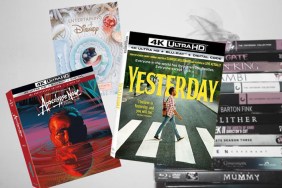Singer-songwriter Nick Drake’s body of work – three proper recorded albums, several previously unreleased tracks, and sketches of songs recorded before his death – is relatively small. And while there are lots of photos, there’s no filmed footage of him performing or hanging out with friends and family. Barely having risen to the level of a cult figure in his short life, it would have been easy for him to have gotten eclipsed by history. Instead, his legend has grown slowly over the decades since his November 1974 death at the age of 26 by an overdose of anti-depressants. Both the mythology and the genuine admiration of his music are fueled by the work itself – poetic, dark, ethereal; intimate as it captures senses of alienation and searching that are universal. He’s the prototypical tortured genius.

Nick Drake, photo courtesy Redferns
In the 2000 documentary A Skin Too Few: The Days of Nick Drake, director Jeroen Berkvens’ creative choices weave the standard tools of the bio-doc (interviews with family and friends, photo montages set to the music of his subject) into a work that actually evokes the sense of its subject aesthetically, rhythmically and in emotional tone. For one, the only music in the film is that of Drake; there’s no additional score. So there’s a stillness and quietness to the film that underscores the isolation everyone interviewed says defined Drake. Instead of acting as a distancing tool for the viewer, that quality of stillness pulls you in, gives us a sense of his chilled, tormented interior life as autobiographical details are sketched in.
Born in Burma in 1948 to a British colonial family, Drake moved back to England with his family when he was a small boy. His parents and older sister adored him, and they spent his whole life struggling to help and understand him as he battled depression. Gifted at sports and intellectual pursuits (he studied poetry at Cambridge), he seemed largely indifferent to his gifts until he started making music. But even then, he was atypical in the way he tried to make his way in the world. Early in the film, his sister Gabrielle (a successful actress in her own right), notes, “I don’t think he wanted to be a star, but he felt he had something to say.” Later, an old friend laughs and shakes his head when saying that the very idea of a “career” was anathema to Drake.

Nick Drake, photo courtesy Keith Morris
Throughout the film, as we are carefully guided through the trajectory of his very brief, anxiety-making career and the deterioration of his mental state including his shame at having to return home to live with his parents (“I don’t like it at home but I can’t bear it anyplace else,” his sister quotes him as saying,) there are musical interludes in which his songs are played (almost in full each time) as photos slowly ease across the screen. But perhaps the moment that best encapsulates the power of the film and the way it bottles the essence of Drake is when one of his songs plays as the camera – from the inside of a moving car – films the blurred lights and imagery of the passing streets. It’s an impressionistic moment, darkness broken with flashes and snippets of light, and it’s haunting.







